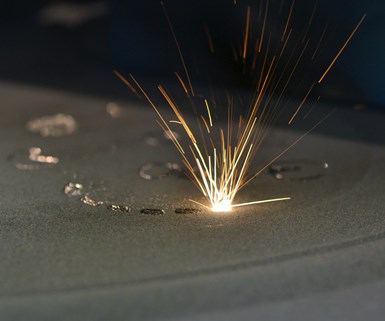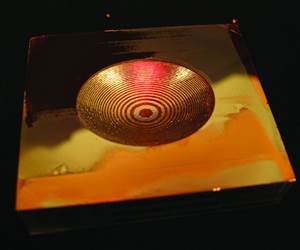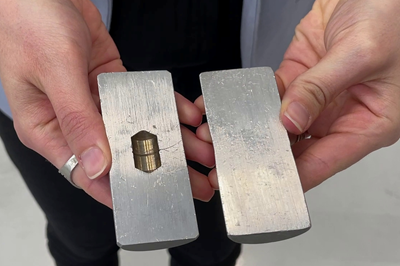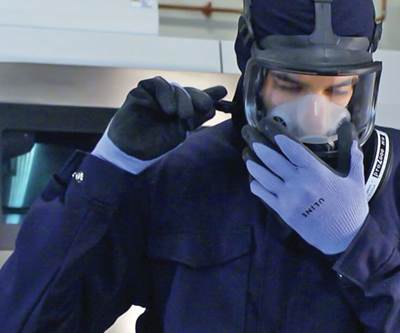Inert Gases: Easing the Challenges of Metal AM Operations
Inert Gases aid metal additive manufacturing processes but the usefulness for each process is dependent upon the gas used. Dive into three inert gases to learn more about how to use them in an additive capacity.
Share

Inert gases are gases that do not react with other chemicals or gases in certain conditions and because of this trait, they are well used during metal additive manufacturing processes. Photo: Getty Images
Reducing the risk of atmospheric impurities finding their way into the materials has been an ongoing challenge with metal additive manufacturing (AM) processes since its inception. Introducing an inert atmosphere and inert gases to the metal AM process is a solution to that challenge, but of course, each type of inert gas has its own unique properties and considerations.
Some background: Inert gases are gases that do not undergo chemical reactions with other substances in certain conditions. Inert gases such as argon and nitrogen create a chemically inactive environment, enabling successful part builds that meet metal AM standards. Therefore, in an inert atmosphere, metal AM processes such as directed energy deposition, electron beam melting, selective laser sintering, binder jetting or powder bed fusion can offer an environment without the risk of contamination from reactive gases that exist in the air, such as oxygen and carbon dioxide.
The specific uses of inert gases are dependent both on the metal AM technique in use, and also the metal powder being processed. Let’s dive into the three gases used primarily in metal AM: argon, nitrogen and hydrogen.
Argon
Argon provides a higher degree of inert atmosphere necessary for layer-wise fabrication of AM parts from aluminum and titanium alloy metal powders. Argon is used for hot isostatic pressing (HIPing) metal parts built using layer-wise sintering. HIPing reduces internal stresses created during the sintering process and increases part density and strength.
Offering few supply choices, argon composes just 1% of the earth’s atmosphere and is present in air at a concentration that is too low for cost-effective small-scale production. In addition to its low concentration in the atmosphere, argon has a boiling point so close to oxygen that it requires a specifically designed, very large cryogenic air separation system to economically recover purified argon from the oxygen.
These considerations mean that argon, critical for the HIPing process, is not a gas that can be made on-site at metal AM companies, and may only be widely available in highly industrialized countries. The net effect of limited argon availability will be that layer-wise sintering processes that require HIPing in argon for postprocessing may be limited to geographies where argon is readily available. If a metal AM operation needs argon for HIPing, it will need to utilize delivered liquefied argon stored in an on-site tank. It should also be noted that argon pricing is highly volatile. Shortages or not, argon is going to be an appreciable expense.
Nitrogen
Nitrogen is generally used in the build chamber for layer-wise (laser or electronic beam) fabricating parts from stainless steels, cobalt-chrome alloys, nickel alloys and other metals.
Nitrogen composes 78% of the atmosphere, and pure nitrogen is very broadly used in industry. Liquefied nitrogen is made worldwide in relatively cost-effective cryogenic air separation units of a variety of capacities, and is generally available for industry everywhere. Liquefied nitrogen is available in various quantities from minute to extremely large. Delivered liquid nitrogen, particularly at the lowest tier of use, in cryogenic dewar (thermos) tanks, can be a great way to start on a new process as it offers a low fixed cost. The variable cost of the liquefied gas is often much higher than for larger tank sizes. The costs associated with delivered nitrogen are the costs of production, transportation and storage.
Once a process is in place and operational, and nitrogen requirements are steady and well-understood, nitrogen users for metal AM may wish to advance from individual dewars to either delivered and stored bulk liquefied nitrogen and/or on-site generated nitrogen to save money on nitrogen. On-site generated nitrogen, properly specified and implemented, can save up to 75% as compared to delivered bulk liquid nitrogen for thermal processing applications. Whereas delivered cryogenic liquid nitrogen is pure nitrogen only, on-site generated nitrogen is a blend of nitrogen with a small amount of argon. Since argon is even more inert than nitrogen, for 99% of applications, the argon typically creates no issues but this should always be verified first.
Some users don’t take an either-or approach, but embrace both supply techniques. Using liquid nitrogen for the processes at a site might require the highest purity, or argon-free nitrogen, and the other option, choosing generated gaseous nitrogen to supply the lower purity, cost-optimized nitrogen for purging, inerting and pressurization in a thermal processing facility. This “hybrid” approach often is the most attractive, ensuring the highest quality results at the lowest overall costs, but at the additional capital cost of two sets of nitrogen distribution piping — one for low purity nitrogen, and a smaller header system just for the few high purity nitrogen requirements.
Hydrogen
Hydrogen (generally used pure, or sometimes blended with nitrogen) is used in the sintering furnace atmosphere for sintering most debound binder jet metal AM parts, which are initally printed bound with polymer and wax binders. Examples include stainless, superalloy and copper parts. A few metals react with hydrogen and are sintered in pure nitrogen or argon. Much more reactive than the other two gases, hydrogen has its own set of rules to follow when implementing into a facility. For example, while argon and nitrogen are inert, hydrogen is flammable, leak-prone and has extremely low activation energy, wide flammability range, and very high chemical energy content. A single hydrogen cylinder contains the energy equivalent of 35 pounds of TNT!
Obtaining the Gases
Depending on the AM technique utilized, and the metallurgy intended, nitrogen, argon, and/or hydrogen may be required for successful metal AM fabrication. There are two options to provide for the industrial gases required for metal AM:
- Delivered, stored gas supply
- On-site generated gas supply

Atmospheres consisting of pure hydrogen, nitrogen and argon gases, and vacuum techniques, will predominate in metal AM. Photo: Getty Images
In industrialized regions, the most common approach to industrial gas supply often is based on delivered, stored gases, delivered by an industrial gas supplier, and with an inventory of liquefied or compressed gases stored on the user’s site. The user would rent the storage vessel and enter into a gas supply contract with one of the several suppliers that serve the customer’s geographic area. In areas that are less industrialized, this approach would be more expensive, and may not even be possible, as the industrial gas industry may not be capable of supplying equipment and reliable gas supply. Particularly for hydrogen and argon, there are many areas of the world where reliable, quality, cost-effective delivered gas supply can be a challenge.
An alternative to delivered and stored gases is the option of production at the user’s site. Of the three gases used primarily in metal AM (argon, nitrogen and hydrogen), two — nitrogen and hydrogen — can be made cost-effectively on-site, eliminating the requirement for most or all gas storage.
Furthering the opportunities for metal AM production will require the use of industrial gases appropriate to the specific techniques and materials implemented. For metal AM, where equipment capacity and atmosphere volume requirements are a fraction of the scale of a steel mill or auto components plant, the cost of the atmosphere is less important than the ease of availability and process benefits that it provides. Because metal AM is more likely to use expensive alloys and pure metals in “performance-centric” applications, the purity and performance of the atmosphere are more important than saving a few cents per unit of volume. Hence it is expected that neat and blended atmospheres consisting of pure hydrogen, nitrogen and argon gases, and vacuum techniques, will predominate in metal AM.
Related Content
Understanding HP's Metal Jet: Beyond Part Geometry, Now It's About Modularity, Automation and Scale
Since introducing its metal binder jetting platform at IMTS in 2018, HP has made significant strides to commercialize the technology as a serial production solution. We got an early preview of the just-announced Metal Jet S100.
Read MoreAM 101: What is Ultrasonic Additive Manufacturing?
Going from additive to subtractive can be simple with Ultrasonic Additive Manufacturing (UAM). What is it and how does it work? Learn the basics in this 101 post.
Read MoreAM 101: What Is Binder Jetting? (Includes Video)
Binder jetting requires no support structures, is accurate and repeatable, and is said to eliminate dimensional distortion problems common in some high-heat 3D technologies. Here is a look at how binder jetting works and its benefits for additive manufacturing.
Read More8 Cool Parts From Formnext 2023: The Cool Parts Show #65
New additive manufacturing technologies on display at Formnext were in many cases producing notable end-use components. Here are some of the coolest parts we found at this year’s show.
Read MoreRead Next
AM 101: What Is Hot Isostatic Pressing (HIP)? (Includes Video)
Hot isostatic pressing has long been used for metal castings, but is now being applied as a valuable method for closing porosity in metal 3D printed parts.
Read MoreAdditive Manufacturing Is Changing the Rules on Safety
Bringing safety to the forefront helps to mitigate the risk of additive technology within a manufacturing environment.
Read MoreInert Gas in Metal 3D Printing, Materials and Postprocessing
High-end metal additive manufacturing relies on the perfect gas composition to create products that meet the required material properties. But gas such as argon is also key to metal powder production, storage and postprocessing.
Read More










.JPG;maxWidth=400;quality=70)